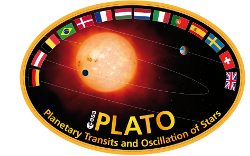Areas of interest:
-
Stellar interiors

Antonio García Hernández started his research career in 2005 with a posgraduate I3P grant funded by the Consejo Superior de Inviestigaciones Científicas (CSIC). He worked at the Instituto de Astrofísica de Andalucía (IAA-CSIC) in Active Galactic Nuclei (AGN). Late that year, he was awarded with a Ph. D. grant (FPI) funded by the Spanish Minister of Sciences. He developed his Ph. D. at the IAA-CSIC working on Asteroseismology and got his degree at the University of Granada (UGR) in 2011.
In 2012, he held a long postdoctoral position at the Centro de Astrofísica da Universidade do Porto (CAUP, currently IA-UP) in Portugal. By 2016, he started a posdoctoral contract at the UGR under the PLATO2.0 mission project. Since 2020, he is PI of the project “Characterization of Rotating Stars” (CHARROTS, E‐FQM‐041‐UGR18).
Biografía
Antonio García Hernández inició su carrera investigadora en 2005 con una beca I3P de posgrado financiada por el Consejo Superior de Inviestigaciones Científicas (CSIC). Trabajó en el Instituto de Astrofísica de Andalucía (IAA-CSIC) en Núcleos de Galaxias activos (AGN). A finales de ese año, recibió una beca de doctorado (FPI) financiada por el Ministro de Ciencias de España. Desarrolló su doctorado en el IAA-CSIC trabajando en Astrosismología y obtuvo su título de doctor por la Universidad de Granada (UGR) en 2011.
En 2012, ocupó un largo puesto posdoctoral en el Centro de Astrofísica da Universidade do Porto (CAUP, actualmente IA-UP) en Portugal. En 2016 inició un contrato posdoctoral en la UGR en el marco del proyecto de la misión PLATO2.0. Desde 2020 es IP del proyecto “Caracterización de estrellas rotantes” (CHARROTS, E‐FQM‐041‐UGR18).
